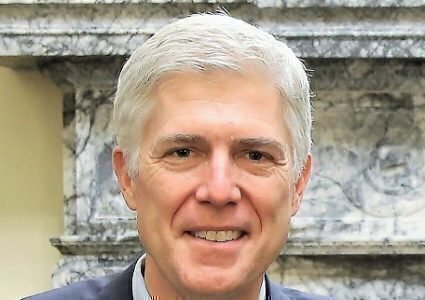After four days of hearings, the nomination of Judge Neil Gorsuch is set to move through the Senate in the next few weeks. There are two big questions that will be addressed in very short order.
 The first question is related to the ability of Gorsuch’s nomination to get to a full vote in the Senate. The second question is if Gorsuch’s nomination were to be approved by the full Senate, would Gorsuch be on the Supreme Court bench to hear arguments in mid-April?
The first question is related to the ability of Gorsuch’s nomination to get to a full vote in the Senate. The second question is if Gorsuch’s nomination were to be approved by the full Senate, would Gorsuch be on the Supreme Court bench to hear arguments in mid-April?
This week, Gorsuch spent two days answering questions from the Senate Judiciary Committee on his career history, case decisions and legal philosophy over a 20-hour period. Not surprisingly, committee chair Chuck Grassley and other Republicans had high praise for Gorsuch’s nomination and his conduct at the hearings. The Democrats on the committee had an opposite reaction. Grassley wants a vote by the committee on the Gorsuch nomination on Monday, April 3. With the Republicans controlling the committee, it is expected the majority will have a favorable recommendation for its report on Gorsuch, to send to the Senate for a full vote. That would not be unusual, since 13 of the past 15 nominees to appear before the committee have received favorable reports.
Once the report leaves the committee, the nomination is scheduled on the Senate’s Executive Calendar, and by custom, the Senate Majority Leader (Mitch McConnell) would ask the Minority Leader (Chuck Schumer) to ask for unanimous consent for the nomination to be scheduled for a full discussion by the Senate.
On Thursday, Schumer said he would support a filibuster against Gorsuch’s nomination. Normally, to overcome a filibuster, at least 60 Senators need to agree to limit the debate over a nomination to 30 hours after a cloture motion is made on the Senate floor. In 2006, a filibuster and cloture motion were attempted to disrupt the nomination vote for Samuel Alito, after two days of floor debates. It failed by 12 votes as many Democrats opted to let the nomination go forward.
In 2017, McConnell faces two options. One is to reinterpret the Senate rules, in the same away Harry Reid did in 2013, to eliminate any filibuster possibility for a Supreme Court nominee. The other is to gain the support of enough Democrats to defeat the filibuster and win a cloture vote by getting eight Democrats to vote with the Republican majority.
McConnell also has said he wants a final full vote on the Gorsuch nomination by April 10. According to the Senate’s official calendar, that is the start of the State Work Period, which is the technical name for the recess. Unless the Senate holds a weekend session for its Gorsuch confirmation vote, the final vote – if it survives the filibuster – could be on Friday, April 7. That would be the end of an active week where the nomination would be sent to the full floor, debated, filibustered and then potentially approved.
In November 2013, Reid used a failed cloture vote for a judicial nominee, Patricia Ann Millett, to reintroduce that vote using parliamentary tactics which could not be appealed. A majority of the Senate approved the tactic, which McConnell publicly condemned. Now, McConnell could use the same tactic after a cloture vote is taken against Gorsuch and if that vote succeeds in blocking the nomination.
As of Wednesday, McConnell seemed confident the nominee would be confirmed on that schedule. “We’ll be on Judge Gorsuch a week after next and we’ll confirm him before we leave for the April recess,” McConnell said at a public news conference.
At the same time, the Supreme Court will be getting ready to hear at least 13 cases between April 17 and April 26, with a private conference scheduled for April 13. Gorsuch would need to be confirmed and sworn in by those dates to take part in the conference and the case arguments.
And there is the very real possibility that the federal government’s appeals about the Trump administration’s immigration ban executive orders could be arriving at the Supreme Court in April. In the federal Fourth Circuit, both sides on Thursday asked for an expedited hearing schedule that should bring the case, in some form, to the Court in a matter of weeks. Scott Bomboy is the editor in chief of the National Constitution Center.






